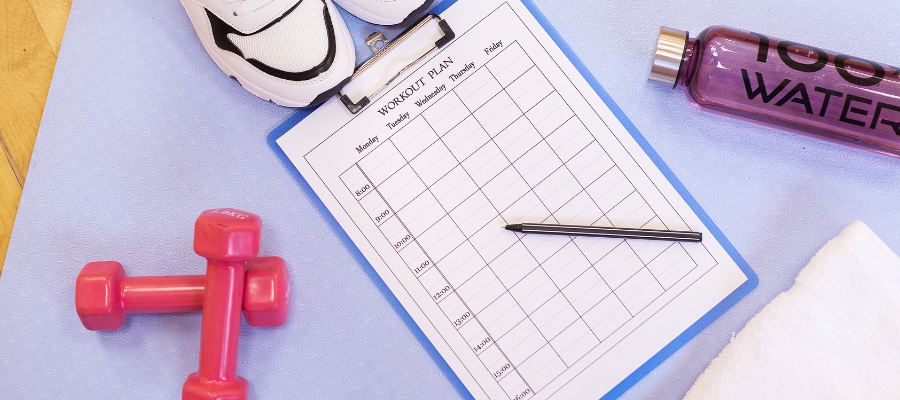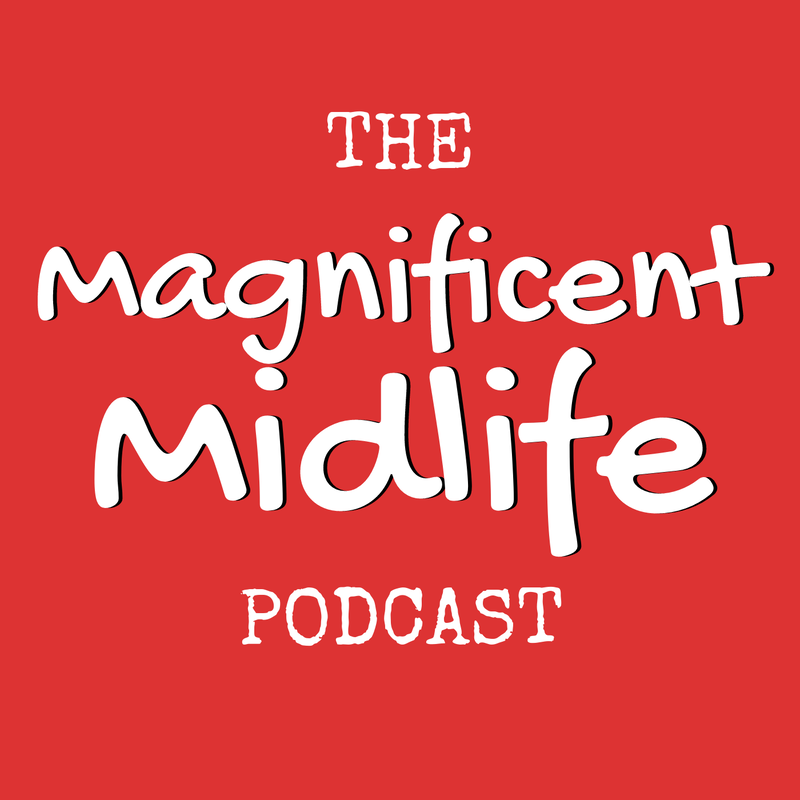|
As women navigate menopause and midlife, many new challenges and changes are happening. One particular struggle many women have is managing their weight. Due to hormonal and lifestyle changes, gaining weight after menopause is incredibly common and challenging to navigate. One essential part of losing weight after 50 is having an effective workout plan tailored to your body in postmenopause. I want to dive into the elements of how to create an exercise plan because so many women end up doing what I like to call chaos training. Chaos training means doing various workouts without rhyme, reason, or understanding of why. This often leads to frustration and a lack of results, which can be demotivating and can cause women to give up or continue down an unhealthy cycle. It's important to note that postmenopause demands intentionality in your workouts because our bodies respond differently to our efforts, rendering chaos training obsolete. In this article, we'll discuss what workouts are best for postmenopausal women, the significance of exercise during this stage of life, and five crucial elements to consider when building an exercise plan for weight loss. So, let's embark on this journey of empowerment, unlocking the secrets to a healthier and more vibrant postmenopausal life. Which Workouts Work After MenopauseDeciding on a workout plan for post menopause can be difficult because sometimes it can feel like nothing works, no matter how hard you try. The truth is that certain types of exercises will work better for your body after menopause. Why? As we age, our bodies respond differently to our efforts, and we need to be more deliberate about what we're doing in our workouts. Because we have been naturally losing lean muscle mass (sarcopenia) since our 30s, it's important to focus on strength training. This will help us build muscle and strengthen our bones. Estrogen has also been declining since perimenopause, and along with that, we have an increased risk of osteoporosis, lax ligaments, and a decreased ability to drive glycogen into our muscles to help with muscle contraction. All of which strength training helps to counteract. I am not suggesting that you ignore cardio workouts, but they shouldn't be the foundation of your exercise program. Too much emphasis on cardiovascular or aerobic exercise can be stressful on your body, causing you to increase your cortisol levels, decrease fat burning, and possibly increase muscle breakdown—the exact opposite of what you're trying to do. But don't worry—there is a place for cardio; you just need the right amount for your body and your metabolism. Lastly, I want to pay attention to stretching and balance training, which every woman should include in their exercise plan. You risk injury when you lack the range of motion or the stability that comes with good balance. Whether it's the inability to handle a fall and breaking a bone or your muscles shortening from lack of proper use, causing poor posture and aching joints, neglecting this area of physical fitness will eventually catch up with you. Why Exercise is Important After MenopauseWhen you neglect exercise, your body and mind decline at an accelerated rate compared to those who engage in regular, effective exercise. There's a direct correlation between the amount of muscle in our body and our cognitive ability. Maintaining a strong, lean body also helps with activities of daily living, reducing joint pain and improving posture, mobility, flexibility, and strength. One of the greatest benefits of exercise is maintaining our independence. No matter how much we exercise, we will get weaker as we age. As much as we'd like to, we can't defy age! Why not go into your 70s, 80s, and 90s as strong as you can, improving your chances of being able to care for yourself instead of having to rely on assisted living or your children? 5 key Elements of An Effective Work Plan#1 Hits all major muscle groups within the week To build strength, you need balance. That means you need to work each of your muscle groups equally. If you neglect this aspect of your training, you could cause muscle imbalances that could lead to poor posture, back pain, limited range of motion, and poor balance. #2 Works you through all planes of motion You need to be aware of three motion planes: the frontal plane, the sagittal plane, and the transverse plane. The frontal plane divides our body into front and back. Exercises that move along this plane are lateral raises, hip abduction, or shoulder presses. Next, there's the sagittal plane, which divides our body in half through the midline of the body. Exercises that utilize this plane are lunges, squats, bicep curls, or seated rows. Lastly, there's the transverse plane, which is the most important. When you neglect this plane, you can end up with a very limited range of motion through your torso, neck, and hips. The transverse plane utilizes rotational moves, dividing our body into upper and lower halves. Exercises in this plane are Russian twists, cross crunch, or lunges with a twist. Learning the planes of motion can be confusing at first. Still, once you start thinking in these terms it becomes easier to identify them. When you ensure each of your routines includes all planes of motion, you'll create a well-balanced body that can move well in different directions. #3 Incorporates all aspects of physical fitness All aspects of physical fitness include muscular strength, cardiovascular endurance, muscular endurance, flexibility, and body composition. We must address all areas of fitness, including flexibility, endurance, and strength. The key is knowing how much of each you need. Some women may do fine with two strength training workouts, two cardio workouts, and a couple of yoga sessions. Another woman may need four strength training, one cardio session, and three yoga sessions. Yet another woman may need to focus mainly on strength and walking! Knowing what your body and metabolism need at any given time is the key to maintaining a strong, energetic body. #4 Includes adequate rest and recovery As we age, we need even more rest between workouts, and it takes longer for us to recover from workouts. Not getting enough rest could be the one area keeping you from getting results. When you neglect your downtime, you're setting yourself up for injury, muscle loss, poor recovery from workouts, restless sleep, anxiety, and even mood swings. It all comes down to balance. Try to remember that when we lift weights, we're breaking the muscles down so they can become stronger. If we don't give them adequate rest, they become weaker, which is exactly how you'll feel if you don't get enough sleep and take some days off from exercise. #5 Uses enough resistance to elicit change It's quite common for women not to lift heavy enough weights or to continue lifting the same amount of weight they were lifting last week or even last month. It's also common to see people having full-blown conversations while walking on the treadmill, trying to get in a cardio workout instead of focusing on the intensity of the exercise itself. I hate to tell you this, but that's not working out. Well, not in a way that will get you results anyway. When lifting weights, you must lift heavy enough so that your muscles are completely fatigued at the end of each set. Push yourself to do more each time. And when you're doing cardio, you should be at least a little breathless. The most effective cardio workouts for women after menopause are high in intensity but short in duration. This helps you hold onto your muscle and burn stored body fat. ConclusionKnowing which elements are necessary to make an exercise plan effective is crucial. This is especially true for women after menopause because their bodies have different needs than they did when they were younger. The best workouts for women in midlife are strength training workouts mixed in with various exercises that focus on all areas of physical fitness, focus on each plane of motion, include adequate rest and recovery, and are intense enough to elicit change.
When it comes down to it, we're all unique and will have different needs. Still, there are some elements to be aware of to ensure you're getting a well-rounded and effective program. Keep these five elements in mind when you begin a new exercise plan. Want more to read? How to Design An Effective At-home Workout Plan Is Resistance Training Good for Osteoporosis Postmenopause? Why You Feel Tired During Your Workouts Want Leaner Legs? What To Do & What Not To Do Why You Need To Be Foam Rolling
0 Comments
Leave a Reply. |
authorLisa Swanson is an ACE Certified Health Coach, Personal Trainer and Orthopedic Exercise Specialist as well as a certified AASDN and PN level 1 nutritionist. With over 35 years experience helping people turn their lives around, she is on a mission to provide relevant and useful knowledge to help women in midlife reach their goals. featured onCheck out my interview with the Magnificent Midlife podcast on staying fit and healthy long-term.
Categories
All
|
What I DoAt Body & Soul Coaching I empower women over 50 to lose weight and feel confident without deprivation diets or spending hours in the gym.
|
Company |
|
|
© COPYRIGHT 2022. ALL RIGHTS RESERVED.
|
Website Design by My Personal Trainer Website
|



 RSS Feed
RSS Feed